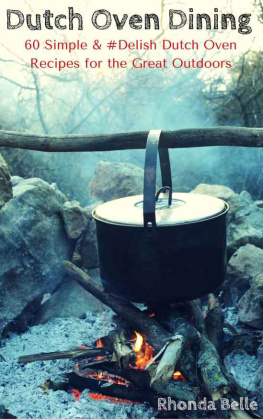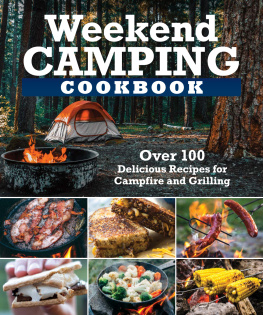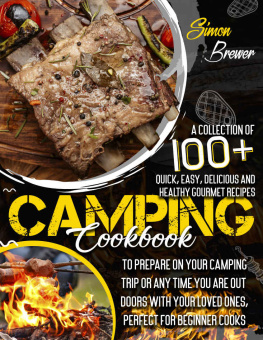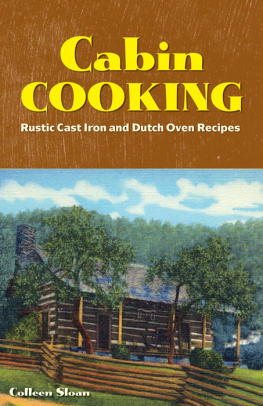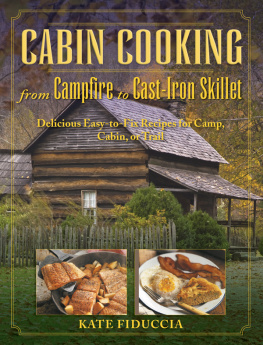A tip of our straw hats to the following for their willingness to share and help in so many ways:
Jim Johnson, Robins husband, who built campfires, fixed my camera, carried everything, sampled everything we came up with, and made suggestions. He was always honest about it, too.
Cindy Forbes of Ronan, Montana. It was my very great pleasure to meet Cindy on a beautiful late summer day. She shared a recipe with us that to this day we cant seem to get right.
Lorrie Turner who shared stories of her mother and recipes perfect for the ride you take or the table you set.
Jan Shipman who, literally, saddled right up and sent me a photo of her and her trail partner, Bull, plus the recipe for her trail mix she takes on her rides.
Coi Drummond-Gehring, Denver Museum, who has been my go-to person for historic photographs for quite a few of my books.
Harney County Historical Society was helpful and their quick response was so appreciated!
Montana History Project provided us with quite a few lovely old photos of gardens and picnics back in the old days.
Lauralee Northcott provided valuable, and often funny, advice on horse camping as well as a wonderful poem she wrote.
Janice Gilbertson, who is no stranger to horse camping, shared a recipe and a dandy picture, too.
Gail James, from England, who visited the Great Basin of Washington State and became a real cowgirl. She shared what the Brits take on a picnic.
Rod Castelda was very shy about asking if we would be interested in the foolproof, indestructible sandwich he made as a boy picking peaches in the Yakima Valley of Washington State.
Special thanks to Chef Instructor Clive Wanstall, CCE, who teaches at Lane Community College in Eugene for his tips and hints for food safety in the great outdoors.
And last but not least, not by a long shot, my editor, Erin Turner. She started us down this trail. She handed the reins to Sarah Parke who brought the whole thing, strays and all, to the book you have in your hands.
It isnt fun getting sick in the great outdoors from eating bad food, and it will definitely ruin your trip. In general, you can pack-in food that needs to be kept cool or hot usually for a three-day window providing you are using coolers and have ways to heat up your food. Longer than that, you should consider foods that dont need to be kept hot or cold, including shelf-stable things like fresh fruit, canned goods, dry grains, bread, and nuts. You can also purchase instant/dehydrated/freeze-dried products available at outdoor stores that only need hydration and a little heat to serve.
If you are traveling in an RV with the capacity to refrigerate food, you only need to make sure that the refrigerator is keeping the proper temperature while you are on the road. However, many RVs do not have the capacity to run a refrigerator while traveling. In this case, you will also need to use coolers, but then you can switch over to the refrigerator once you reach your destination.
Our good friend and Chef Instructor Clive Wanstall, CCE, who teaches at Lane Community College here in Oregon graciously contributed his words of culinary wisdom regarding food safety in the wild.
Wanstall says, I like to pre-prepare as much food as possible and just toss together and/or finish cook with little fussing.
He also recommends his Bare Bones Basics for campers to remember, which are:
- Keep it cold or keep it hot.
- Keep preparation on-site to a minimum.
- Cook and eat promptly.
- Avoid leftovers (make enough, but not too much).
The first concept is keeping your food either cold or hot. Food needs to be kept out of whats called the danger zonetemperatures between 40 to 140Ffor more than two to four hours. These in-the-middle temperatures are when bacteria can grow easily and make your sick. Cooking out of doors or taking food to eat outdoors needs more thought to help keep food safe on the trip. Here are some tips:
- Pre-chill all your food before you put it in the cooler.
- Start with frozen foodit will defrost and it will help keep things cool in the cooler.
- Have two coolersone for drinks and one for food.
- Use blue ice or freeze your fresh water or juice in bottles or milk cartons, as well as ice.
- Pack your cooler tight, with fewer air gaps (think 60 percent food and 40 percent ice).
- Layer your food and icea layer of ice on the bottom and then meats, more ice, and other food, with ice on the top to finish off with your more delicate items.
- Keep your cooler in the shade or cover it with a towel or blanket.
- Think about keeping a refrigerator thermometer in your coolers.
- Take extra caution with raw meat, making sure it is located in the coldest places in the cooler.
- Invest in an insta-read thermometer and make sure that you are cooking meat to the highest minimum temperature. According to Chef Wanstall, the most recent temperature guidelines are as follows:
- Chicken and reheated foods: 165F
- Ground beef, pork, and lamb: 155F
- Fish and steak/chops (beef, pork, and lamb): 145F
Keeping it all clean is also very important to protect the food you serve from any contamination. Be very careful, as an example, not to work with meats and then start working with prepping vegetables on the same cutting board without sanitizing and also washing your hands.
Being organized also helps food safety and makes for a much more relaxing time cooking outdoors. The more prep work you can accomplish at home before you go, the better. Look at the things you want to serve and think about what might be done ahead of time. If a recipe calls for diced onions, dice them at home and then put them in a plastic bag. This goes for measuring out ingredients and even starting a recipe that can be finalized on your trip. Take pre-measured and prepped ingredients whenever possible. Chef Wanstall also suggests freezer-quality zip-top bags.
Here are some more tips for organizing your cooking station:
- Wash your hands frequently when preparing food. Designate a hand wash area (away from food preparation if you can). No water for hand washing? Take sanitizing wipes and use them often.
- Use latex gloves for food preparation on the trip.
- Clean your cooking area before and after your cooking project.
- Prep raw meats away from other food products you are preparing, including using a separate cutting board for meat.
- Take Band-Aids along in case of knife cuts.
- Wrap your cooking utensils in plastic for transport.
- Put your food in containers or plastic, so it doesnt get soaked with melting ice.
- Take the smallest amounts of ingredients, just the amounts you need to use.
Cast Iron
Look up Lodge Manufacturing Company at lodgemfg.com for any questions you might have. This is a good company! They can help.
Cowgirl Books
In addition to being a great cowgirl, Janice Gilbertson has been writing and sharing cowboy and western poetry for more than twenty years. Her poetry books title poem, Sometimes, in the Lucias won WWAs Spur Finalist award in 2009 and her debut novel, Summer of 58, was published by Pen-L Publishing in 2015. Her follow-up novel, The Canyon House, was a Women Writing the Wests 2017 WILLA Literary Award finalist. Her work has also appeared in She Speaks to Me: Western Womens View of the West through Poetry and Song, compiled by Jill Charlotte Stanford (TwoDot, 2016). In 2020, she published her first horror novel, The Dark Side of Gibson Road.
Janice was born and raised in Pine Canyon, west of King City, California, in an area known for being part of John Steinbeck Country. This is where she still lives, writes, and rides today.





